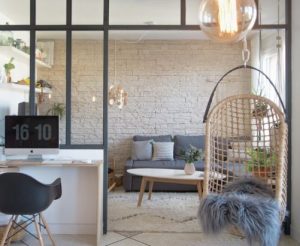Global warming used to offer us only two choices: either be uncomfortable in the extreme summers and freezing winters or break the bank with ever-increasing electricity and gas costs to regulate indoor temperatures. Fortunately, there is now a third and better option, especially for new home buyers – go for sustainable, passive solar homes. However, how do you know if the display homes Adelaide you’re looking at are using the passive solar principle?
 The idea of passive solar home design is to use natural elements to reduce energy use for lighting, ventilation, heating, and cooling. This may include home construction techniques such as positioning windows based on where the sun rises and sets at different times of the year. The effects of natural breezes may also determine the position and size of windows and other openings in the house.
The idea of passive solar home design is to use natural elements to reduce energy use for lighting, ventilation, heating, and cooling. This may include home construction techniques such as positioning windows based on where the sun rises and sets at different times of the year. The effects of natural breezes may also determine the position and size of windows and other openings in the house.
Without the technical jargon of home builders, here’s what you should find in display homes Adelaide designed with the passive solar technique in mind:
- Majority of the windows are on the northern side of the home. Passive solar homes are designed this way to help capture sunlight during winter and help maintain the house’s temperature for warmth and comfort, as well as provide natural lighting.
- On the contrary, there will be minimum windows on the western and eastern sides of the house. The goal of this is to reduce the effect of direct sunlight that drives up the heat in the home during summer.
- The southern side of display homes Adelaide with the passive solar design will have window openings. This layout will promote cross-ventilation inside the house, creating a natural breeze to keep the home cool during summer.
- You would find ceiling vents or high windows. These help the heat inside the home rise and escape, and roof ventilators will eliminate heat in the attic.
- If you’re tech-savvy, bring an infrared thermometer during a daytime visit to display homes. Check the ceiling temperature, and you’ll find that the insulation helps with both heating and cooling by maintaining a more constant warmth inside the house.
- You would see outdoor home structures like eaves and awnings too. These roof extensions protect each room from direct sunlight in the summer while still allowing natural light into the home in the winter.
Undeniably, homeowners these days are more aware of our environmental impact and what we can do to decrease it. We can do our bit to minimise our carbon footprint by embracing passive solar homes. By recognising and adopting a few key elements of passive solar home design, we can achieve great results at little or no extra cost. If done correctly, we could also save hundreds of dollars by reducing energy costs to heat and cool our homes.